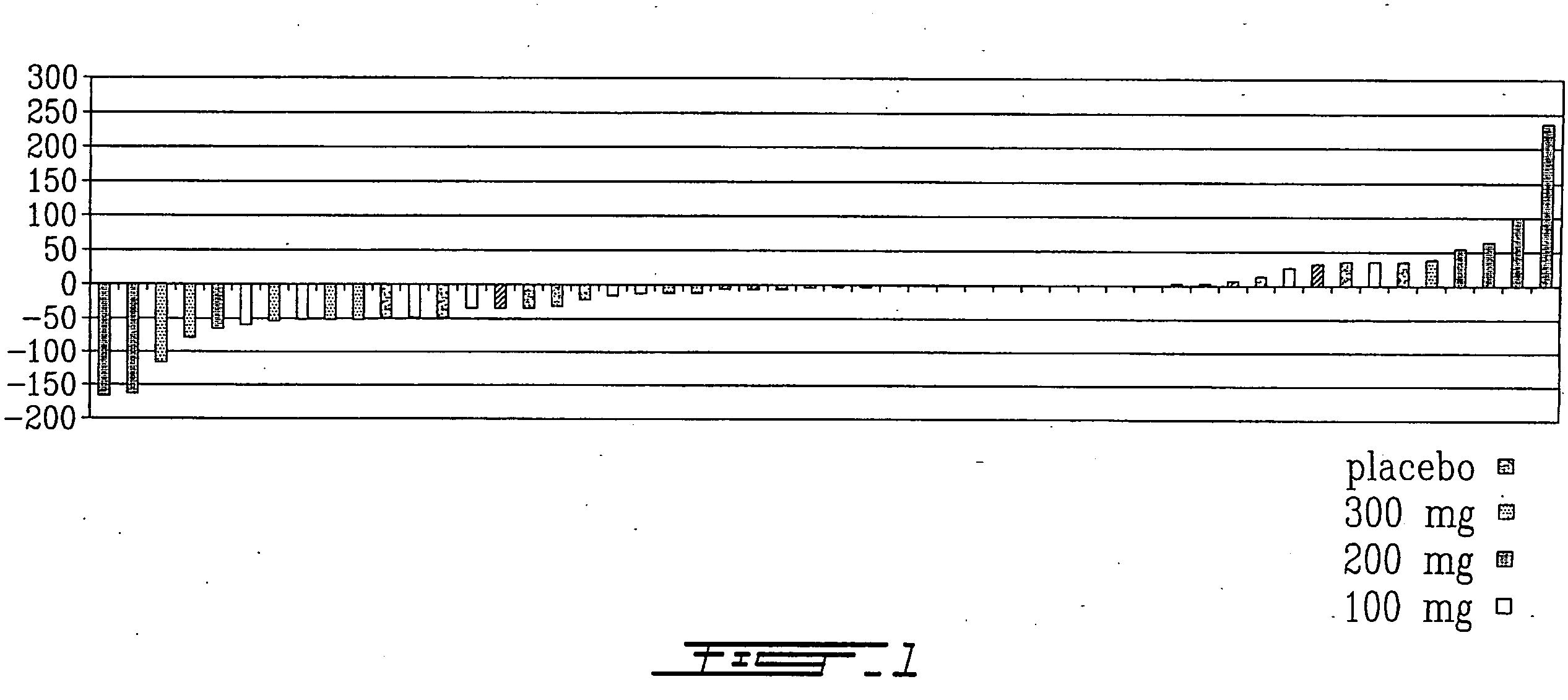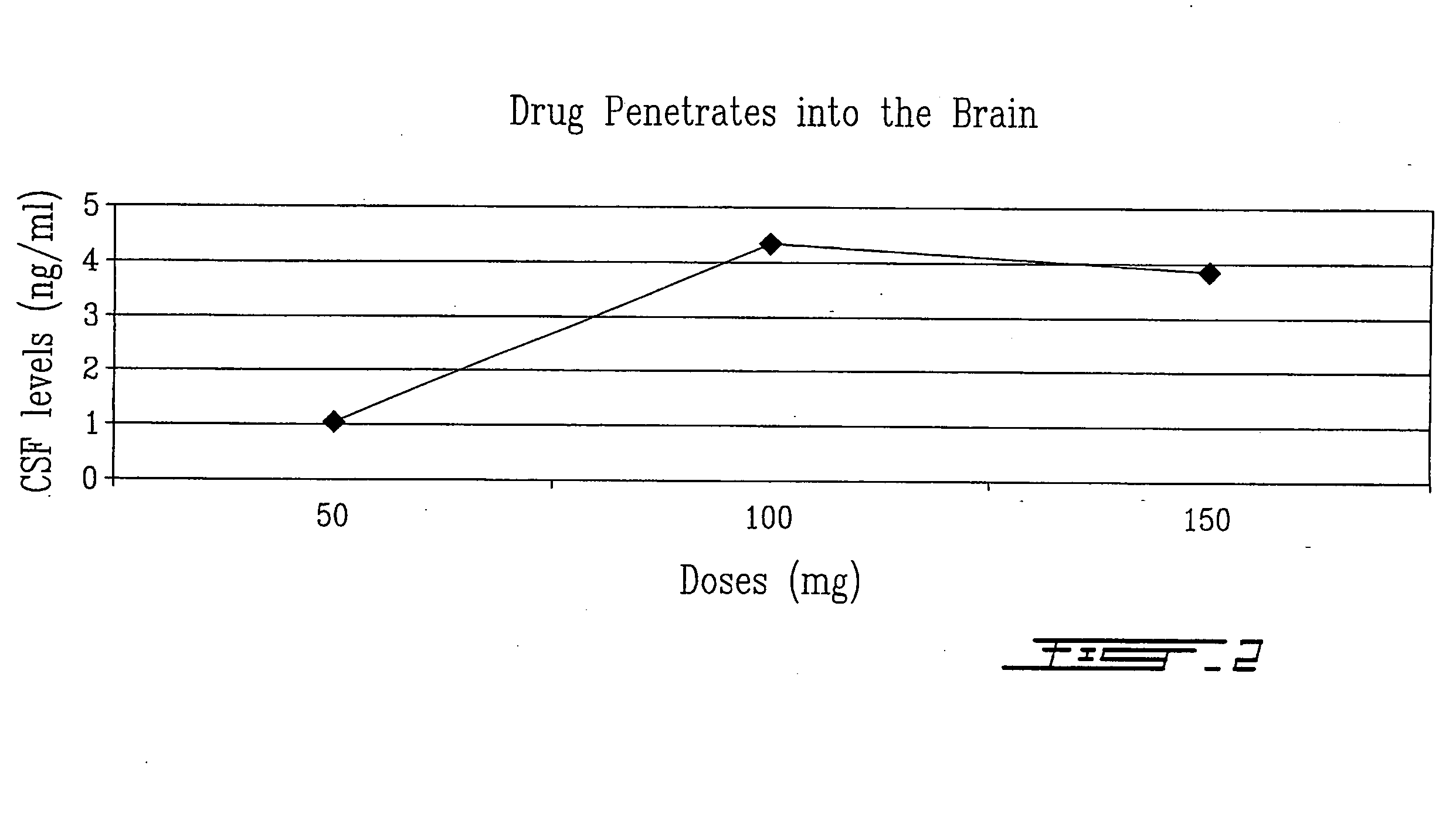Therapeutic formulations for the treatment of beta-amyloid related diseases
a technology for beta-amyloid and related diseases, applied in the direction of peptide/protein ingredients, immunological disorders, metabolism disorders, etc., can solve the problems of disease not being prevented or cured, disease progression, physical disability, etc., to reduce the rate or amount of -amyloid aggregation, slow the rate of amyloid- fibril formation or deposition, and reduce the degree of amyloid- deposition
- Summary
- Abstract
- Description
- Claims
- Application Information
AI Technical Summary
Benefits of technology
Problems solved by technology
Method used
Image
Examples
examples
Binding and Antifibrillogenic Assays
[0404] Test compounds were purchased from commercial sources or synthesized and screened by mass spectroscopy (“MS”) assays. The MS assay gives data on the ability of compounds to bind to an amyloid.
[0405] In the mass spectroscopy (“MS”) assay, samples were prepared as aqueous solutions containing 20% ethanol, 200 μM of a test compound and 20 μM of solubilized Aβ40. The pH value of each sample was adjusted to 7.4 (±0.2) by addition of 0.1% aqueous sodium hydroxide. The solutions were then analyzed by electrospray ionization mass spectroscopy using a Waters ZQ 4000 mass spectrometer. Samples were introduced by direct infusion at a flow-rate of 25 ηL / minute within 2 hours after sample preparation. The source temperature was kept at 70° C. and the cone voltage was 20 V for all the analysis. Data were processed using Masslynx 3.5 software. The MS assay gives data on the ability of compounds to bind to Aβ, whereas the ThT, EM and CD assays give data...
PUM
| Property | Measurement | Unit |
|---|---|---|
| concentration | aaaaa | aaaaa |
| systolic pressures | aaaaa | aaaaa |
| particle size | aaaaa | aaaaa |
Abstract
Description
Claims
Application Information
 Login to View More
Login to View More - R&D
- Intellectual Property
- Life Sciences
- Materials
- Tech Scout
- Unparalleled Data Quality
- Higher Quality Content
- 60% Fewer Hallucinations
Browse by: Latest US Patents, China's latest patents, Technical Efficacy Thesaurus, Application Domain, Technology Topic, Popular Technical Reports.
© 2025 PatSnap. All rights reserved.Legal|Privacy policy|Modern Slavery Act Transparency Statement|Sitemap|About US| Contact US: help@patsnap.com



